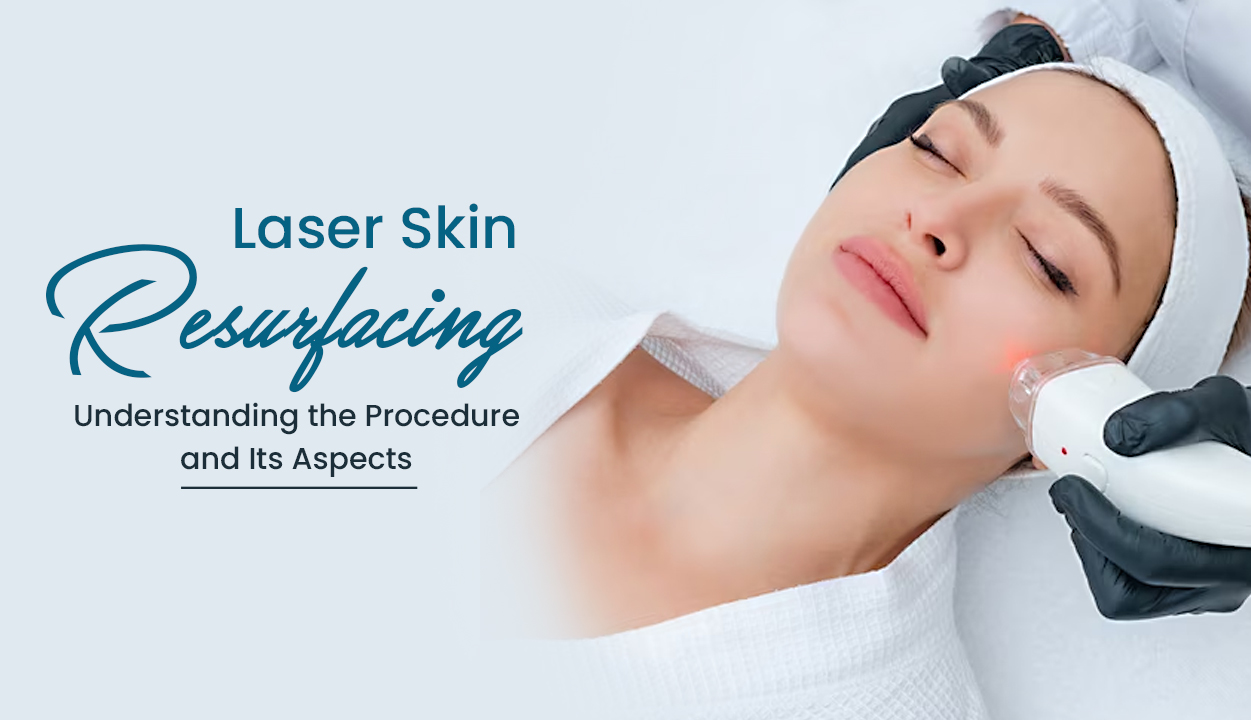
Laser Skin Resurfacing: Understanding the Procedure and Its Aspects
In the realm of modern skincare, where science meets beauty, laser skin treatments, especially laser skin resurfacing, have emerged as transformative procedures for scar treatment, skin tightening, wrinkle reduction, and tackling age spots or warts. Delving into the intricate details of this procedure reveals how it can rejuvenate your skin and restore your confidence.
A Comprehensive Approach to Skin Concerns
While there is a range of laser skin treatments available, laser skin resurfacing’s capabilities extend far beyond scar treatment. It’s a multi-tasker that addresses various skin concerns. From sun damage and age spots to lines and wrinkles, this procedure becomes your skin’s partner in rejuvenation.
- Taking on Scars with Precision: Laser skin resurfacing specializes in scar treatment. The procedure uses focused laser energy to target scar tissue, stimulating the production of collagen – a key protein responsible for skin healing and skin tightening. What’s truly remarkable is that the laser’s precision ensures that only the scarred areas are treated, leaving the healthy skin untouched. Over a series of sessions, the scar tissue begins to fade, and the texture of the skin smoothens out. Whether it’s acne scars, surgical scars, or those left by injuries, laser skin resurfacing is a powerful solution that brings back clear and confident skin.
- Harnessing the Power of Skin Tightening: Our skin loses elasticity as we age, leading to sagging and laxity. The procedure’s magic lies in its ability to stimulate collagen production, which tightens and firms up the skin, also leading to wrinkle reduction. The controlled heat energy from the laser encourages the skin to contract, resulting in a rejuvenated and youthful appearance.
- Wrinkle Reduction: Laser skin resurfacing offers a non-invasive approach to wrinkle reduction. By targeting the outer skin layers, the procedure kickstarts the growth of collagen and new skin cells. This dynamic duo results in wrinkle reduction, yielding smoother and more youthful-looking skin.
Understanding the types Of Laser Skin Resurfacing
- Ablative Laser: This type removes the outer layer of skin (epidermis) and also heats the underlying skin (dermis), stimulating collagen growth. It’s effective for improving skin texture. Options include carbon dioxide (CO2) lasers, erbium lasers, and combination systems.
- Nonablative Laser or Light Source: This approach stimulates collagen growth with less downtime. Pulsed-dye laser, erbium, and intense pulsed light therapy fall under this category.
Precautions and Post-Treatment Care
Before opting for laser skin resurfacing, it’s essential to take a few precautions:
- Inform your healthcare provider if you have any medical condition or are taking any medication.
- Avoid sun exposure and use sunscreen.
- Stop using retinol or other skin products as advised.
After the procedure:
- Follow post-treatment care instructions carefully.
- Protect your skin from the sun and use recommended skincare products.
- Be patient; results improve over time.
Side Effects of Laser Skin Resurfacing
Laser resurfacing may lead to certain side effects, with nonablative methods generally resulting in milder and less frequent side effects compared to ablative laser resurfacing.
- Common side effects include swelling, redness, itching, and discomfort. The treated skin might experience swelling, itching, or a burning sensation. Redness can be quite intense and could persist for several months after the procedure.
- Acne may exacerbate due to the application of thick creams and bandages after treatment. There’s also a possibility of temporary development of small white bumps on the treated skin.
- Infection is a potential risk encompassing bacterial, viral, or fungal infections. A typical infection involves reactivation of the herpes virus, which is responsible for cold sores.
- Skin color alterations can occur as a result of laser resurfacing. Treated skin might become darker (hyperpigmentation) or lighter (hypopigmentation) than its original shade. These changes are observed more in individuals who have dark brown or black skin.
- While the risk is slight, ablative laser resurfacing carries a potential for scarring.
Laser skin resurfacing is an effective option for scar treatment, wrinkle reduction, skin tightening, and so on. It’s a journey towards tighter, smoother, and more youthful skin. If you’re evaluating various laser skin treatments or wish to learn more, we invite you to consult with our expert dermatologists. At Yashoda Cosmetic Boutique, we’re dedicated to helping you take great care of your skin with the latest in medical aesthetics. Contact us today to embark on the path to revitalized and radiant skin.
